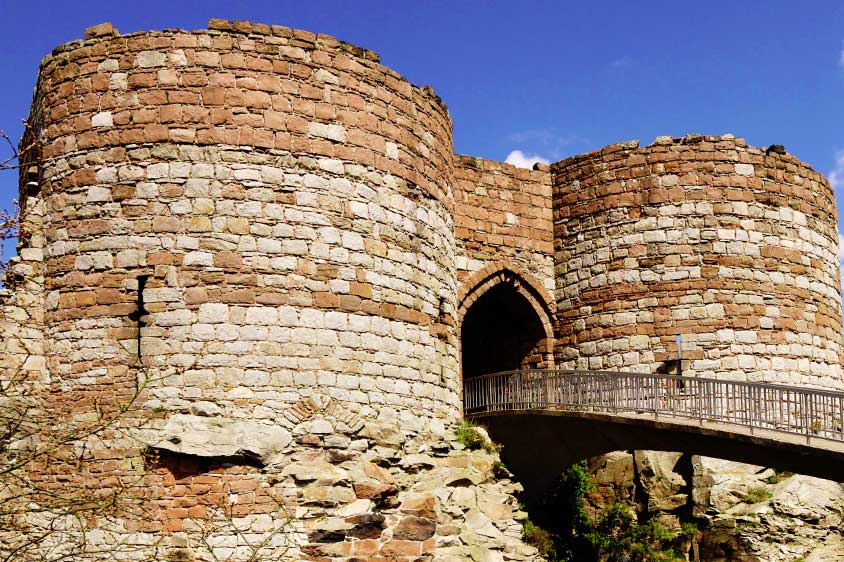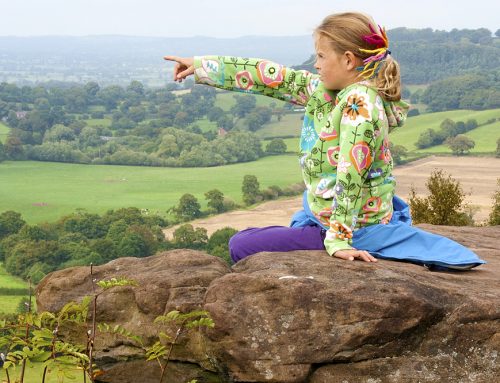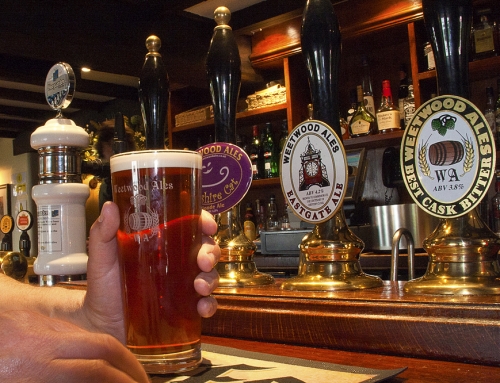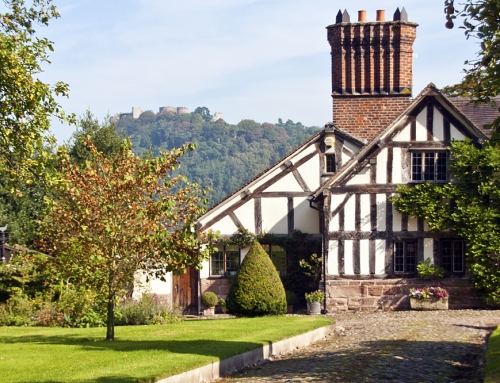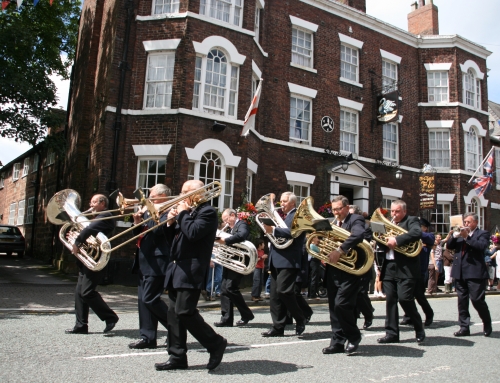‘Castle of the Rock’: Beeston Castle rises high above the Cheshire Plain
The Cheshire countryside along the Sandstone Trail is rich in British history and its monuments, stretching back several thousand years to prehistoric times.
Along the way you’ll see everything from Bronze Age and Iron Age hilltop enclosures and Roman roads to medieval churches and castles.
Caves, Hillforts and Roman Roads
The earliest clues to man’s impact on the landscape along the Trail are several caves (at Overton near Frodsham and Mad Allen’s Hole, at Bickerton, for example) that may have been lived in during the Mesolithic period when hunter-gatherers first returned to post-Ice Age Britain. Scatters of their flint tools have been found at Woodhouses, near Frodsham, and at several prehistoric hilltop enclosures along the central sandstone ridge.
Six hilltop enclosures or hillforts dominate the ridge: at Helsby Hill, Woodhouses, Eddisbury, Kelsborrow Castle, Beeston and Bickerton. There are also plenty of Bronze Age burial mounds, barrows or ‘lows’, along the Trail.
Then the Romans arrived. At the same time they were building their legionary fortress at Chester, they constructed a network of Roman roads across the country, including Watling Street, which runs from Chester (Deva) to Manchester (Mamucium)and crosses the Trail below Eddisbury Hill.
When the Romans left, the Saxons moved in and set up the kingdom of Mercia which embraced modern Cheshire. They later refortified Iron Age Eddisbury hillfort as part of a line of forts to keep the Vikings at bay.
Medieval Churches and Castles
Then came the Norman conquest and the creation of the vast hunting forests of Mara and Mondrem, whose last vestiges are part of modern Delamere Forest today. Several of the churches along the Sandstone Trail date back to Norman times.
But the best reminder of the Middle Ages along the Trail is Beeston Castle, high on its lofty crag.
A number of ancient salt ways cross the ridge, once used by trains of packhorses carrying salt from the Cheshire brine springs at Nantwich, Northwich and Middlewich.
The Trail also crosses the old Chester to London coach road, an early canal, and the Holyhead to London railway line close to Beeston Castle.
Two Cheshire castles dominate the central gap in the ridge: medieval Beeston Castle and nearby Victorian Peckforton Castle, up on Stanner Nab.
Wherever you are on the Sandstone Trail, history is all around you. For more fascinating details, and point by point accounts of what to look for and where, get hold of a copy of the official guidebook, Walking Cheshire’s Sandstone Trail by Tony Bowerman

